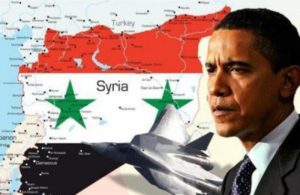With the bombing of the UN aid convoy in Syria and fresh attacks on Aleppo after the Assad regime declared the ceasefire over, American and UN officials are in need of a Plan B. Now that trust between the U.S. and Russia is at a new low after Russia allegedly carried out the convoy attack, the situation on the ground Thas gotten even more grim. With the U.S.-Russian ceasefire accord in tatters, the time has come to put a Safe Zone in place for refugees.
In fact, a de facto safe zone is already in place in northern Syria. The Turkish military’s recent thrust over the shared border has begun to allow Syrian refugees to cross back over into Jarabulus. For weeks Turkey has been advocating that the U.S. and western allies work with it to install a formal Safe Zone. With no other realistic options remaining, this novel development has the potential to be a game changer.
The only viable option is to install a Safe Zone in northern Syria stretching north from Aleppo to the Turkish border and east to just west of Kobani. The viability of the zone rests on Turkey’s ability to lead the effort and militarily guard the zone on the ground, and the fact that the Syrian regime does not at present fly in this area. The security and humanitarian reasons are compelling, from turning around refugee flight to establishing a sizable zone of stability and allowing the focus to be on eradicating ISIS with Turkey fully engaged.
Ironically, only after the failed coup attempt has President Erdogan gained full control of Turkey’s military for the first time. The controversial aftermath nonetheless has newly emboldened Turkey. At first, this complicated matters while Turkey was successfully pushing the Kurdish YPG forces back east beyond the Euphrates, for western allies have relied on the Kurds as the most effective anti-ISIS force on the ground.
But now that Turkey feels it has successfully created a wedge in the efforts of the Kurds to occupy the ground in northern Syria from west to east, it is focusing squarely on ISIS. In fact, Erdogan suggested to President Obama that Turkey work with the U.S. and others to kick ISIS out of its Raqqa stronghold. And it strongly favors installation of a Safe Zone in Syria.
Importantly, the mini détente between Turkey and Russia helps, because this will dent Russian opposition. Syrian opposition fighters should not be allowed in the zone—only refugees—for otherwise Syria and its Russian backer would view it as a security threat.
Because Obama floated the joint operation against ISIS idea to Erdogan increases the likelihood that with Turkey agreeing to this, the U.S. is more likely at long last to agree on a Safe Zone—which would be a complement to a ceasefire were it to get revived. With a Safe Zone in place and Turkey fully engaged, Western and Gulf allies could turn to dealing ISIS its greatest defeat to date. Kicking ISIS out of Raqqa would lend substantial momentum to the diplomatic track and put much more pressure on Assad to compromise than is currently in place.
The Safe Zone on the ground should be complemented by a No Fly Zone (NFZ) in the air. This would ideally be air policed by Turkey and NATO, and with Turkish troops guarding it on the ground, either the UN or the EU could run the Safe Zone. With NATO engaged, neither Russia nor Syria will risk attacking the zone. Back home in the U.S., the Obama Administration would get support from this from both Hillary Clinton and Donald Trump who both have called for installing one.
In fact multiple short term safe zones have already come and gone in this conflict, each small in scale in western Syria and usually agreed between Hezbollah and Syrian opposition forces. None of them were bombed by either the regime or Russia.
Concern about Russian opposition to a Safe/NFZ Zone is overblown, for after bombing the UN humanitarian convoy and trashing the ceasefire it helped broker demonstrates once and for all Russia’s true intentions. It is time to seize back the initiative from Moscow. The diplomatic track is dead; from this point the only thing that matters in Syria is dynamics on the ground.
Turkey is the key to what would be a deft move to retake the initiative. Turkey is now aimed at ISIS, having sealed its border, cut off ISIS supply routes, created a de facto safe zone already allowing marked refugee return, and now advocating a safe zone for which it will do the heavy lifting.
The Kurds have been the loser in Turkey’s intervention, and they are unhappy the U.S. allowed Turkey to not only take territory they had taken but also engage them militarily for a brief period. Thus, the U.S. could usefully begin to arm the Kurds more heavily, albeit still indirectly through the Syrian Arab force that Turkey looks the other way on.
There is also an outside chance that the U.S. can pull of a diplomatic coup by getting both Turkey and the Kurdish forces to work with western allies in removing ISIS from Raqqa. It will not be easy, but it is worth a try. Without western troops, and without either the Kurds or the Turks, a military victory there will not be possible–even with western air power fully engaged.
In a conflict that has killed half a million Syrians and seen over half of the country’s population depart as refugees—with another half a million trapped in Aleppo and several other locations—a Safe Zone will help ease this mass suffering, seemingly a good enough reason for installing one.
Moreover in strategic terms, the shift from Turkey makes moving in this direction sensible, as there are zero options otherwise for engendering a chain of events that could get this civil qua regional war anywhere close to a viable endgame.
Dr. Jeffrey A. Stacey is currently Managing Partner of Geopolicity USA, an overseas development firm. Formerly he was Senior Fellow at the Center for Transatlantic Relations at SAIS, before which he served in the Obama Administration as a State Department official specializing in NATO and EU relations at the Bureau for Conflict Stabilization Operations. At State he founded and managed the International Stabilization and Peacebuilding Initiative (ISPI), which has over 20 government and international organization partners.
Dr. Stacey is the author of "Integrating Europe" by Oxford University Press and is currently working on a follow-up book entitled "End of the West, Rise of the East?" He has been a guest blogger at The Washington Note and Democracy Arsenal, a professor of U.S. foreign policy at Tulane University and Fordham University, a consultant at the Open Society Institute and the U.S. Institute of Peace, and a visiting scholar at George Washington, Georgetown, and the University of California. He received his PhD from Columbia University.



Firstly, the suggestion isn’t entirely novel. Last year, for example, not to mention the year before it, German, Danish, French and Australian governments and parliamentarians flouted the idea of a safe zone in Northern Syria to protect civilians and to end “the refugee crisis” in Europe.
The US/Turkish war against ISIS in Northern Syria has gone on for more than a year now, and last year Davutoğlu attempted to frame it as a “safe zone.” In turn, US officials explicitly disavowed in the press any such enterprise. The following is a quote from Reuters in July last year:
“’In Washington, U.S. officials said discussions were ongoing about the size and scope of a zone along the border that would be cleared of Islamic State fighters and allow moderate Syrian rebels to operate freely.
U.S. officials ruled out the joint imposition of a formal no-fly zone and said the plan was not aimed at creating a “safe zone” for Syrian refugees.“
The purpose of the operation is not to create a safe zone into which Syrian refugees will go,” a senior Obama administration official said, speaking on condition of anonymity.”
They might go, but that’s not the purpose of the operation. The purpose of the operation is to clear the border and close the border to Daesh,” the official said.” (Source: Turkey, U.S. aim for zone cleared of Islamic State in northern Syria, Reuters: https://reut.rs/2d055om)
Secondly, I would disagree that “a de facto safe zone is already in place in northern Syria,” notwithstanding the announcement that ISIS has been beat back. The question is: is it *safe* to put civilians there? Not right now, because what takes place in Northern Syria are counter-terrorism operations, not a humanitarian mission with the positive aim of shielding civilians from attacks.
Northern Syria is a zone of limited security, vulnerable still to every warring faction with missile or rocket attack options. Also, since there is no neat division of labor in this messy war, such a limited security zone is not immune from advancing rebel factions and other forces.
Thirdly, I want to dispute the appropriateness of a “safe zone” in Northern Syria.
Commenting on the US/Turkish operations there, Daniel Goveran, the Syria Director at Oxfam, told the press: “The safe zone is, to an extent, being portrayed as a humanitarian initiative, whereas in reality it clearly has a quite complex mix of political and counterterrorism objectives […] There’s the possibility it could actually make the situation worse for civilians. … Also, it’s very, very unclear how civilians would be protected in this area.” (Source: Why Turkey’s Proposed ‘Safe Zone’ May Not Be So Safe, US News & World Report: https://bit.ly/1KssJWj)
Last year the International Committee of the Red Cross held a round-table discussion with policymakers from the State Department, Department of Defense and various elements of the U.S. Armed Services among others on how to assist civilians at risk. In the published outcome report on the discussion it says safe zones “can create the illusion of security for civilians, and may result in their taking risks they would not otherwise take, including returning to their country of origin in adverse conditions.”
The report also stresses that as “a practical matter, the creation of a safe zone – absent consent of the parties – will usually require some element of force to deter attacks and protect those inside the zone.” (Source: Outcome Report: Trapped in Conflict: Evaluating Scenarios to Assist
At-Risk Civilians, An International Committee of the Red Cross (ICRC)
and InterAction Roundtable: https://www.interaction.org/document/trapped-conflict-roundtable-outcome-report)
In other words, a safe zone requires a serious, demanding and irreversible commitment to protect civilians from the air and on the ground – i.e. a no-fly, no-drive and no-move zone. I just don’t see any such a commitment anywhere in the cards.
A closer read of the piece might help your analysis…quotes from months and years ago about previous considerations of safe/no-fly zones do not suffice…the present dynamics are decidedly different…moreover, this would not be zone for opposition forces, but one for refugees…it would be protected both in the air and on the ground (re-read)…finally, your analysis is devoid of current consideration of dynamics involving Turkey and the Kurdish YPG